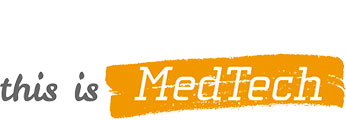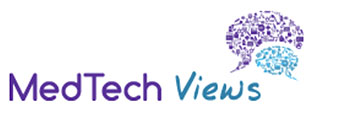Safer, timely and life-changing: medtech innovation is good for patients and policymakers alike
Posted on 06.11.2015
The key to success in the medical technology industry has been continuous innovation and a dedication to research and development. The sector is consistently in the top tier in Europe for R&D spend, investing around around 8% of annual sales. A key driver for this innovation is the exceptionally short lifecycles within the sector. Once a breakthrough technology has been established, improvements are made continuously. Each superseding improvement usually arrives within 18 to 24 months. Therefore, to survive and prosper, manufacturers must continue to innovate. This competitive environment helps the European medical technology sector capture more than 30% of global sales of medical technology. The value-based innovations of the medical device industry have proven to not only improve the lives of millions of patients but also play an important role in making European healthcare systems more efficient, which has become a priority for all European governments.
A revised MDD must ensure an innovation-friendly business environment by employing a decentralised regulatory approach that allows medtech minds to do what they do best – produce life-saving, innovative medical devices in response to pressing healthcare needs. This is why Eucomed welcomes most of the recommended measures in the Commission’s European Medical Device Directive proposal but voices strong concern with regards to the suggested ‘scrutiny procedure’ as it will ultimately harm patients by hampering innovation and slowing the availability of the latest medical technology.
The scrutiny procedure will fundamentally change the current system and will not lead to the desired outcome of increased safety for patients. The measure would address some political calls to move the system towards a centralised pre-market authorisation system as found in the United States but will ultimately result in harming European patients and negatively impact mostly European small and medium sized enterprises (SME). Recent reports from respected academics and researchers have shown that centralised pre-market authorisation systems deny patients receiving life-saving medical technologies as patients must wait on average three to five years longer for the same devices than those in Europe while delivering no additional safety.
An industry built on SMEs
Medical technology is an industry built upon Small and Medium Sized enterprises (SMEs). There are nearly 25.000 medtech companies in Europe(1); of these some 95% are SMEs(1) employing less than 250 people. In fact, the majority of these companies are small and micro-sized, employing less than 50 people.
One of the reasons that SMEs are so important to medical technology is due to the particular nature of research and development within the industry. Innovation often emerges from intimate collaborations between health professionals, academia and the manufacturers – an approach to which small businesses are particularly suited. Developments often arise in direct response to particular needs, and result in the rapid innovation which characterises the industry. SMEs are also the primary reason why Europe enjoys a medtech innovation advantage over other global regions.
A centralised system charged with handling the nearly half a million medical devices purchased by health systems (thirty times the amount of medicines) would slow the approval process and overwhelm the involved parties with work. Furthermore, under a Pre-market Authorization system Europe’s medtech innovation engine would effectively grind to a halt.
A revised MDD must ensure an innovation-friendly business environment by employing a decentralised regulatory approach that allows medtech SMEs to do what they do best – produce life-saving, innovative medical devices in response to pressing healthcare needs.
Maintaining Europe’s medtech innovation advantage
The Financial Times’s FDI Magazine recently lauded Europe’s stellar medtech reputation, pointing out that “the continent’s attractive regulatory environment is increasingly causing venture capitalists from the US to steer their investments across the Atlantic”. John Milad of medtech-focussed private equity firm NBGI ventures called the European medtech market “a huge and productive innovation engine that keeps generating a continuous stream of clinical insights and new technologies”. PriceWaterhouseCoopers also pointed out in its Medical Technology Innovation Scorecard that “US consumers aren’t always the first to benefit from medical technology and could eventually be last.”
A steady flow of venture capital means that even the smallest innovators get their chance to develop their ideas into the life-improving technology critical to European healthcare. Startups and SMEs contribute to the furious pace of European medtech innovation, forming the core of the industry’s innovation ecosystem. It is essential that we maintain this innovation advantage and keep the European “innovation engine” running by perpetuating the regulatory conditions that drive venture funds to Europe. In short, medtech in Europe must remain a good investment.
What medical technology means to Europe’s economy
Europe is home to some of the biggest global names in medical technology, accounting for 30% of the world market 1. In addition, we have a burgeoning ecosystem of innovative small businesses producing both niche products and the innovations of tomorrow for local and global markets. More than 575,000 people are employed by nearly 25,000 medical technology companies – 95% of which are SMEs. Our sector files one new European patent every 50 minutes 2.
Eucomed’s members provide high-end jobs in Europe by re-investing in R&D and employing thousands of people in our advanced manufacturing facilities. Our economic impact can be seen in the sector’s positive trade balance of €14 billion (2011), more than twofold an increase since 2006 3.
1. Eucomed calculations based on the data obtained from National Associations of 15 countries for the latest year available. Countries with (partially) provided data: Belgium, Czech Republic, Denmark, France, Germany, Greece, Ireland, Italy, Netherlands, Poland, Portugal, Spain, Sweden, UK, Switzerland.Medical technology including in-vitro diagnostics. Europe refers to EU + Norway, Switzerland.
2. Espicom, Eucomed calculations. Manufacturer prices. Medical device excluding in-vitro diagnostics. Europe refers to EU + Norway, Switzerland.
3. European Patent Office, Eucomed calculations. Medical technology as defined by World Intellectual Property Organization (based on the WIPO IPC-Technology concordance as revised in August 2012)


